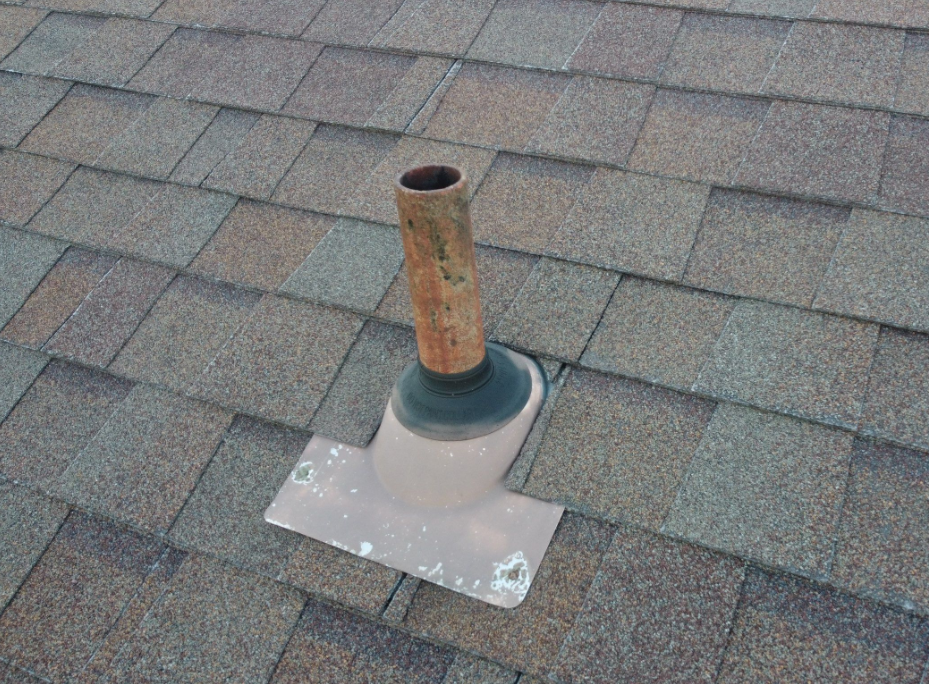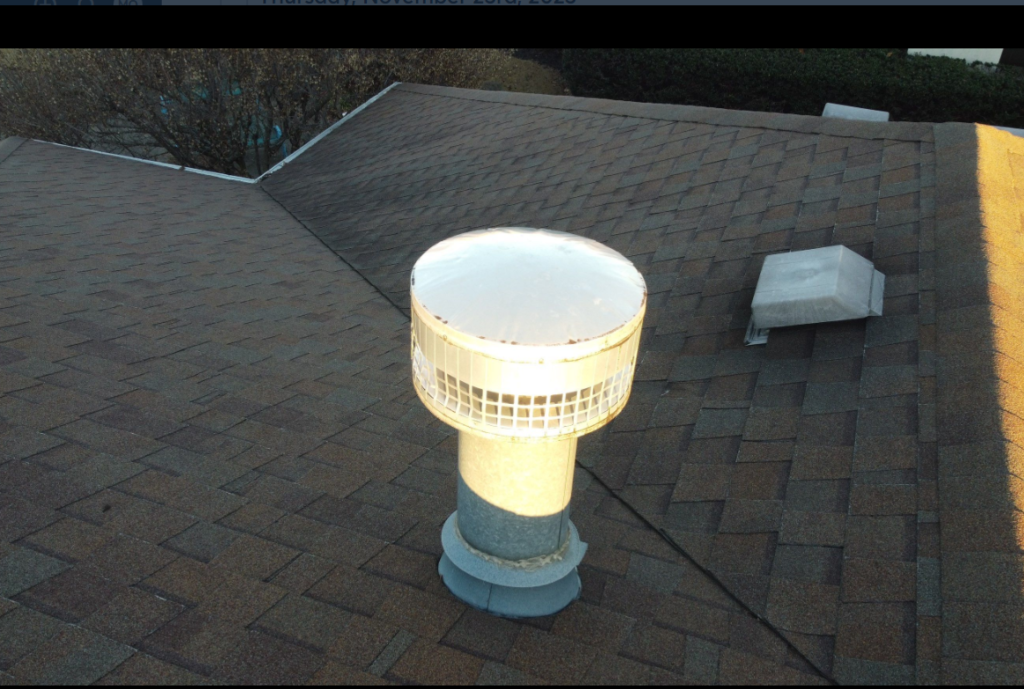 The question of whether or not to cover a roof vent pipe is one that often stirs discussion among building and roofing professionals . At first glance, the answer may seem straightforward given the pipe’s role in facilitating air circulation and ensuring efficient drainage.
The question of whether or not to cover a roof vent pipe is one that often stirs discussion among building and roofing professionals . At first glance, the answer may seem straightforward given the pipe’s role in facilitating air circulation and ensuring efficient drainage.
However, the reality is more complex, with key considerations such as potential blockages from external elements and the risk of moisture freezing inside the pipe in colder climates. Furthermore, there’s the matter of the impact on the building’s overall structural integrity and living conditions to consider.
This discussion aims to explore these issues and provide insights into why a roof vent pipe cover may not just be advisable, but crucial for the longevity of a building’s plumbing system
Key Takeaways
- Roof vent pipes are essential components in a building’s plumbing system, providing a path for waste gases to exit and air to enter.
- Vent pipe covers are crucial in protecting the pipes from external elements, preventing potential damage and blockages.
- Uncovered vent pipes can lead to water leaks, damage to the roofing material, amplified noises, and mold growth.
- Regular cleaning and maintenance of roof vent pipes are necessary to ensure efficiency and longevity, and hiring a professional roofing contractor is important for accurate diagnosis and effective solutions.
Understanding Roof Vent Pipes
 To fully appreciate the importance of covering roof vent pipes, one must first understand the fundamental role and functionality of these essential components in a building’s architecture.
To fully appreciate the importance of covering roof vent pipes, one must first understand the fundamental role and functionality of these essential components in a building’s architecture.
Roof vent pipes, or plumbing vents, are part of a structure’s plumbing system, providing a path for waste gases to exit the building. They also allow air to enter the plumbing system, maintaining the necessary pressure for water to flow freely.
Understanding roof vent pipes and their function is crucial in comprehending why they need to be covered. A vent pipe cover acts as a shield, protecting the pipe from external elements such as rain, snow, or debris which could block the pipe.
When you cover a roof vent, you are essentially guarding the integrity of both the vent pipe and the building’s overall plumbing system.
Without a vent pipe cover, the roof vent pipes are exposed to potential damage and blockages. These issues can lead to a malfunctioning plumbing system, resulting in expensive repairs and a compromised living environment.
Thus, the importance of a roof vent pipe cover is underscored by its role in protecting crucial building infrastructure.
If you’re dealing with structural problems in your roof or considering installing a new one, our top Arkansas roof repair contractors are right here . At Luck Roofing, we provide unbeatable roofing services to Fort Smith and its neighboring areas. You’re welcome to contact us at (479) 397-2228 for expert guidance. Your project deserves the high standard and reliability we offer.
Importance Of Roof Vent Pipe Cap
 Understanding the significance of a roof vent pipe cap is essential, as it plays a critical role in maintaining the functionality and longevity of the building’s plumbing system. A roof vent pipe cap, when covered, provides protection against various elements that can compromise the system’s integrity.
Understanding the significance of a roof vent pipe cap is essential, as it plays a critical role in maintaining the functionality and longevity of the building’s plumbing system. A roof vent pipe cap, when covered, provides protection against various elements that can compromise the system’s integrity.
The importance of a roof vent pipe cap extends to three main areas:
- Debris Prevention: A roof vent pipe cap helps prevent debris from entering the drainage system, thereby reducing the risk of clogs and potential damage.
- Durability: The cap, especially when made from compatible materials, can resist issues like rust stains, ensuring the vent cap’s longevity.
- System Efficiency: The roof vent pipe cap helps maintain proper air pressure in the plumbing system, facilitating efficient water drainage and preventing wastewater backup.
Without a roof vent pipe cap, the pipe is exposed to wear and tear, susceptible to potential water leaks, and disruptive noises. Thus, covering the roof vent pipe with a cap is an important step to safeguard the integrity of the entire plumbing system.
Reasons To Cover Roof Vent Pipes
Building on the importance of roof vent pipe caps, let’s now explore the specific reasons why covering these pipes is crucial for maintaining the integrity and efficiency of your home’s plumbing system.
Primarily, a cover prevents debris from entering the vent, thereby averting drainage system clogs that can disrupt the flow of water. It also keeps moisture at bay, particularly in winter when trapped moist air can freeze, leading to ice clogs. Another layer of protection is added by covering the base of the pipe with a rubber roof boot, keeping leaks and debris out.
However, it’s important to note that an ill-fitted cover can slow down the airflow in the pipe, potentially affecting water pressure and causing wastewater backup. Therefore, selecting a compatible material for the cap is vital to prevent issues like rust stains and ensure the efficiency of the air system.
To conclude, covering a roof vent pipe is a preventive measure against potential disruptions to your home’s plumbing system, which can lead to significant inconvenience and expense. Therefore, it is a necessary step for homeowners to consider.
Consequences Of Uncovered Vent Pipes
Leaving roof vent pipes uncovered can lead to a plethora of issues, including potential water leaks, amplified noises, and accelerated wear and tear, all of which compromise the durability and efficiency of the home’s plumbing system. The consequences of uncovered vent pipes can even extend to more serious problems such as mold growth due to moisture accumulation.
- Water Leakages: Uncovered vent pipes are susceptible to water intrusion, especially during heavy rainfall. Water leaks around a vent pipe not only damage the roofing material but also trickle down, causing degradation of the plumbing system over time.
- Amplified Noises: Uncovered roof vent pipes can create disruptive noises. The constant rush of air, especially in windy conditions, can be amplified in an open pipe, causing disturbing sounds.
- Accelerated Wear and Tear: An uncovered roof vent pipe is exposed to the elements and is more prone to wear and tear. This can eventually weaken the vent boot, reducing the lifespan of your plumbing system.
In essence, to prevent these issues, it’s crucial to ask ourselves: should a roof vent pipe be covered? The answer is a resounding yes. Proper coverage ensures the longevity and efficiency of your plumbing system.
Guide To Cleaning Roof Vent Pipe
Maintaining a clean roof vent pipe is an essential aspect of home maintenance that ensures the efficiency and longevity of your home’s plumbing system.
To clean your roof vent, follow this guide to cleaning.
Commence with a thorough roof inspection to locate the vent pipe and assess its condition. Over time, it’s common for debris to enter and accumulate, blocking the vent pipe. This can compromise the airflow, causing plumbing issues.
To prevent this, secure a ladder and climb to your roof with necessary safety precautions. Remove the cover of the roof vent pipe, if present. Use a plumber’s snake to push through and dislodge any clogs within the pipe. This helps maintain the pipe’s efficiency and prevents potential damage to your home’s plumbing system.
In some cases, you may need to use a power washer for stubborn blockages. Remember to replace the cover securely to prevent further debris from entering.
Regular cleaning and inspection of your roof vent pipe is essential to ensure the smooth functioning of your home’s plumbing system. This guide to cleaning should make the process straightforward and manageable.
Identifying Vent Pipe Issues
Recognizing issues with your roof vent pipe is crucial as complications such as clogged or uncovered pipes can lead to various problems, ranging from gurgling noises when flushing the toilet to water leakage and reduced durability. Therefore, identifying vent pipe issues early on can save you from costly repairs and maintain the longevity of your property.
There are several tell-tale signs that may indicate problems with your roof vent pipe. Here are three key aspects to look for:
- Unusual Noises: If you hear gurgling sounds when you flush the toilet or use the sink, this could indicate a blockage in the vent pipe.
- Water Leakage: Uncovered pipes or worn-out vent boots may cause water to leak into the house, leading to dampness or water stains on walls and ceilings.
- Slow Drainage: If your sinks or bathtubs are draining slower than usual, this could be a sign of a clogged vent pipe.
When To Seek Professional Roofing Help
Despite the ability to identify vent pipe issues, there are circumstances where it becomes necessary to enlist professional help to properly address these problems. Sometimes, the complexity of the issue or lack of proper tools and skills can make it impossible for homeowners to effectively solve the problem.
In such cases, it’s important to hire a professional roofing contractor. They can conduct a comprehensive inspection, accurately diagnose the issue, and implement the necessary solutions, including a potential roof replacement if the damages are extensive.
The table below outlines some situations when you should seek professional help:
| Situation | Action | Reason |
|---|---|---|
| Persistent Leaks | Hire a professional | A roofing contractor can identify the source of the leak and fix it properly |
| Extensive Damage | Seek professional help | If the roof vent pipe is severely damaged, a roof replacement might be necessary |
| Lack of Expertise | Hire a professional | A professional has the necessary skills, tools, and experience to handle complex vent pipe issues |
And Finally
The importance of covering a roof vent pipe cannot be overstated. Proper coverage prevents damage from external elements, promotes efficient water flow in the drainage system, and aids in maintaining the integrity of a building’s plumbing system.
It is also a preventative measure against potential severe consequences. By understanding the function of roof vent pipes and taking necessary steps, individuals can ensure the longevity and efficiency of their building’s plumbing system.
Michael Overzat
Michael Overzat resides in Fort Smith, Arkansas with his wife and three kids. He enjoys to hike, skateboard, write, and get involved in charity organizations. He was originally born in Maryland. He has worked within the roofing industry for 5 years and is very active within the industry by attending conferences, masterminds, etc. His vision is to create a multi-state organization that has a customer centric model. He's worked for some of the biggest names in the industry and hopes to create a more people focused model for the roof replacement process.
